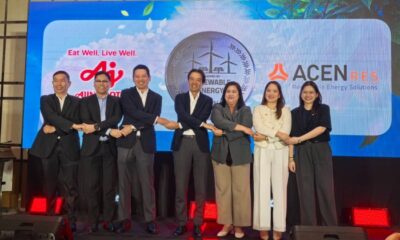PUV Modernization: Here’s What You Need To Know
Whether commuters or the public transport operators like it or not, change is upon the transportation scene in the Philippines. The awful traffic, coupled with its prehistoric Public Utility Vehicles (PUV) have been the cause of suffering for all commuters. Not only are these vehicles causing a lot of inconvenience to the public, but are also a threat to their health and the environment.
This initiative aims to improve the quality of life of the riding public and has been in the government’s to-do list for a long time now. However, it’s been consistently pushed under the rug because it’s bad news for the jeepney drivers and their operators despite the financial assistance that the government will extend to jeepney operators and drivers making it less of a burden.
To understand the context and coverage of this program, let’s break down the real deal behind what jeepney modernization really means.
What is the jeepney modernization program?
This is an initiative of the government which will put in new and safer jeepneys on the street and phase out the old and poorly maintained ones. This was initially introduced by the Land Transportation Franchising and Regulatory Board (LTFRB) in 2015. It seeks to minimize outdated (and almost lethal) jeepneys in the streets, boost passenger safety, and prevent pollution by imposing an age limit for transport vehicles that are allowed to operate.


Basically, this program isn’t only going to regulate jeepneys that are older than 15 years, but also the buses and other public vehicles in the streets.
There are three areas where the program will address:
1. New franchising system
Compared to the current franchising system where jeepney operators propose the routes of jeepneys, the new franchising system will be fully regulated by the government.
- The routes will be planned by the government.
- Single unit operators will no longer be eligible for a franchise.
- Initially, the minimum number of jeepneys for franchise is 20. By 2019, the minimum number will be raised to 40.
- Standardize income of jeepney driver, provide them with regular employment benefits, and abolish boundary system.
2. Improving PUVs to international standards
The government has also imposed a set of guidelines for all vehicles to meet before getting approved to operate. In order to uphold safety, comfort, and environmental soundness, all vehicles and services will comply with the national standards and international vehicle safety conventions. Depending on the type of PUV, there are various specifications that they must meet as imposed by Department of Transportation’s Omnibus Guidelines.
Here is a quick rundown of the most common and impacting upgrades imposed on the future of PUVs in the Philippines:
- Vehicles with combustion engines must have low emissions in compliance with the EURO IV emission standards or better.
- Speed limiters
- Closed-circuit television (CCTV) camera for selected types of PUVs
- Dashboard camera
- GPS
- Person with disability (PWD) friendly
- Comfortable seats
- Provision of Wi-Fi access
- For buses, standing passengers must not exceed five persons
3. Training for drivers
The modernization of the public transport will not be successful without the cooperation from the drivers manning the roads. This is why the modernization program will also include training for these PUV drivers.
The training will serve as a refresher (and a crash course) on the technicalities of driving, safe measures, and proper etiquette in dealing with passengers.
What are the economic implications?
The government has earmarked ₱2.2 billion for its transport modernization plan, which will be used to provide subsidy to drivers and operators who will be buying electronic jeepneys. What does this mean to the economy?
1. Provide new job opportunities
While it cannot be denied that the modernization of public transport will gravely affect individual and small-time jeepney operators and owners, it will pave the way to the car manufacturing industry in the Philippines that will create more jobs.
One of the long-term goals of the jeepney modernization project is to bring the vehicle manufacturing industry into the country. This is however not yet set in stone and might not push through, as it’s still being negotiated by the government with vehicle manufacturers.
2. Enhance tourism industry
According to the Department of Tourism, tourism in the Philippines is thriving as it saw a 19.60% increase in visitor arrivals compared to last year and a 68% increase since 2013. With the jeepney being the primary mode of transportation all over the country, it will make transportation more comfortable and easier not just for Filipinos but also for tourists. It will enhance the tourist experience in the Philippines.
Aside from that, it will put a new and interesting twist to the jeepney icon, which has been in the minds of the world inseparable to the Filipino psyche. This time, the jeepneys (especially in Metro Manila) will not be viewed as a smog machine that spews deadly fumes and poses as a safety hazard to people on the streets.
It will still be uniquely the Philippines’ jeepney, but with a respectable green sheen. If the newly rolled out omnibus franchising guidelines are to be considered, new jeepneys would have at least Euro 4-compliant engines but with a host of comfort and safety features.
3. Streamline public transportation
Road safety and policies will be easier to roll out since the government can easily regulate PUV operators.
4. Gradually solve traffic condition
According to the study conducted in 2016 by Japan International Cooperation Agency (JICA), traffic in the Philippines cost ₱2.4 billion daily to the economy and by 2030 it will peak at ₱6 billion daily if left unsolved.
With the government having full control of the PUV routes, it will be easier to decongest roads and plan routes that will minimize traffic conditions in highly saturated areas.
5. Increase base fare
The modernization of public vehicles will lead to higher base fare, from ₱8 to ₱12. This can be an added burden to the day-to-day expenses of commuters but could result in higher income for drivers and operators. While the other transportation options like buses and TNVS are still likely to retain their current fare rates, jeepney, on the other hand, is most likely to increase.
What’s in store for commuters?
It’s a promising initiative aimed at improving the mode of transportation for commuters. Aside from the sleek new jeepneys that can take you from point A to B safely, there are a handful of benefits that the riding public will enjoy when the Jeepney Modernization Program hit the ground.


A safer and more comfortable transportation system is the highlight of this modernization program. The new vehicles that are showcased by the government promise to be more spacious and offer a bunch of features that uphold safety and security. The doors of some of these new jeeps will be on the side of the vehicle instead of the back, and they will have a longer frame. Some units are air-conditioned to provide a more comfortable option and these modern jeepneys are also PWD friendly.
Aside from the essentials, these e-jeeps also come with GPS navigation system, a CCTV camera, dashboard camera, and even a Wi-Fi connection. These may just be the icing on the cake, but they can make a world of difference in improving the quality of commuting for passengers.
Health and environment friendly
Everyone can agree that jeepneys in Metro Manila are the biggest contributors of carbon dioxide emission. In fact, in 2013 according to Climate Change Commissioner Heherson Alvarez, more than 500,000 diesel-fueled jeepneys, buses, trucks and other vehicles in Metro Manila are responsible for about 70% of the total soot or black carbon emissions in the Philippines.
This can be detrimental not just to the environment but also to the health of the public. Under the program, the proposed vehicles are powered by either Euro 4 engine or electric engine with solar panels on the roof.
Better payment system
Is it time to say goodbye to “paki abot po” payment system that we’ve all grown accustomed to with jeepneys? Not necessarily, not yet. Though, e-jeepneys that will soon be hitting the streets come equipped with a tap card-based fare collection system, well-maintained regular jeepneys that are not older than 15 years old will still remain on the streets. No more passing change from one passenger to the other, all you’ll need is a loaded Beep card and you’re good to go.
Will jeepney operators and drivers lose?


Image source: dailybruin.com
The major reason why Pinagkaisang Samahan ng mga Tsuper at Operation Nationwide (PISTON) and Stop and Go Coalition is against this modernization plan is because they see this initiative as ‘anti-poor’ and that it would lead to the loss of livelihood program of small-time jeepney owners and operators.
Though, this is true to a certain extent, jeepney drivers will not necessarily feel the brunt of this change. At least, not in a bad way. Why?
For jeepney drivers who are merely renting out their jeeps, they will be getting a standard income preset by the government. They don’t have to worry about the monthly amortization of the new jeepneys. At the end of the day, the jeepney operators are mandated to provide them a regular income, not affected by how much the driver is earning per day.
The burden, on the other hand, will be shouldered by the operator who runs a franchise of PUV. The monthly amortization will be a huge financial challenge since each unit despite having a low APR and flexible payment term carries a huge price tag. Almost all the drivers and small business operators cannot afford to franchise the new vehicles.
The high cost of e-jeepney
This is the part that has caused the outrage in light with the modernization of public transport. These modern jeepneys will cost about ₱1.2 million to ₱1.6 million, which are payable for up to seven years.
The estimate for the subsidy of these vehicles is about ₱800 per day or ₱24,000 per month. While this is basically the current boundary rates of jeepney drivers in Metro Manila, operators, on the other hand, will not be able to profit for a long time if this gets implemented.
Government subsidy
To help PUV operators upgrade to newer jeepneys, the Department of Transportation (DOTr) in September signed a memorandum of understanding (MOU) with the Development Bank of the Philippines (DBP) for a ₱1.5-billion loan facility for PUV cooperatives.
The DBP will provide loans to cooperatives to finance the acquisition of new jeepneys.
The DOTr also signed an MOU with the Land Bank of the Philippines last April for a ₱1-billion financing scheme for individual jeepney operators.
The government will be subsidizing ₱80,000 per vehicle purchased by operators or drivers. However, that amount is only about 5% of the total price of these new PUVs and could hardly bring down the monthly repayment, which is the root cause of the outrage from certain transport groups.
Transport cooperatives
The prices of the e-jeepneys are without a doubt very steep for a jeepney driver – DOTr’s solution to this through transport cooperatives.
Cooperatives will grant access to credit facilities, organize operators and drivers (more streamlined implementation of rules and regulations), enhance the service quality of public transport, and reduction of competition. Not only will it fill the financial needs of both jeepney drivers and operators to continue their livelihood, but it will also oversee Public Utility Vehicles better.
Jeepneys, despite being a form of public transport aren’t completely controlled by the government. Forming cooperatives is one step towards achieving this, and the income structure of jeepney drivers and operators will be regulated – veering it away from the boundary system. Cooperatives will treat operators as investors and guarantee them a steady income. Meanwhile, drivers would earn a fixed rate with overtime pay and be given social security and health benefits.
Philippines transport scene vs the world
For neighboring countries, public transport is run by private but Government Linked Companies, making it easier to streamline upgrades and improvements. Meanwhile, our land transport system is ran by private groups and even individuals, and unsurprisingly, it’s outdated as these groups can’t be bothered to upkeep their vehicles because of the cost.
It’s worth noting that the Philippines has long been left out when it comes to modernization of mass transport, compared to its neighboring countries. As neighboring countries like Malaysia and Singapore enjoy the convenience of a seamless and a more centralized mode of transport, the Philippines, on the other hand, is still struggling to even implement an accurate amount of fare system (drivers will have to manually and mentally calculate the fare from point A to B). It cannot be denied that it’s high time for us to actually do something about it, not just for the benefit of the commuters, but also for the environment and the economy.
It’s pretty clear that this is a well-intended initiative with the benefit of the commuters in mind. To fully materialize this project, certain compromises must be made. If we look at the status quo, no one is even winning – not the commuters, not the operators, not even the drivers. Which begs the question – do we really need to impede this from happening? (iMoney)

































